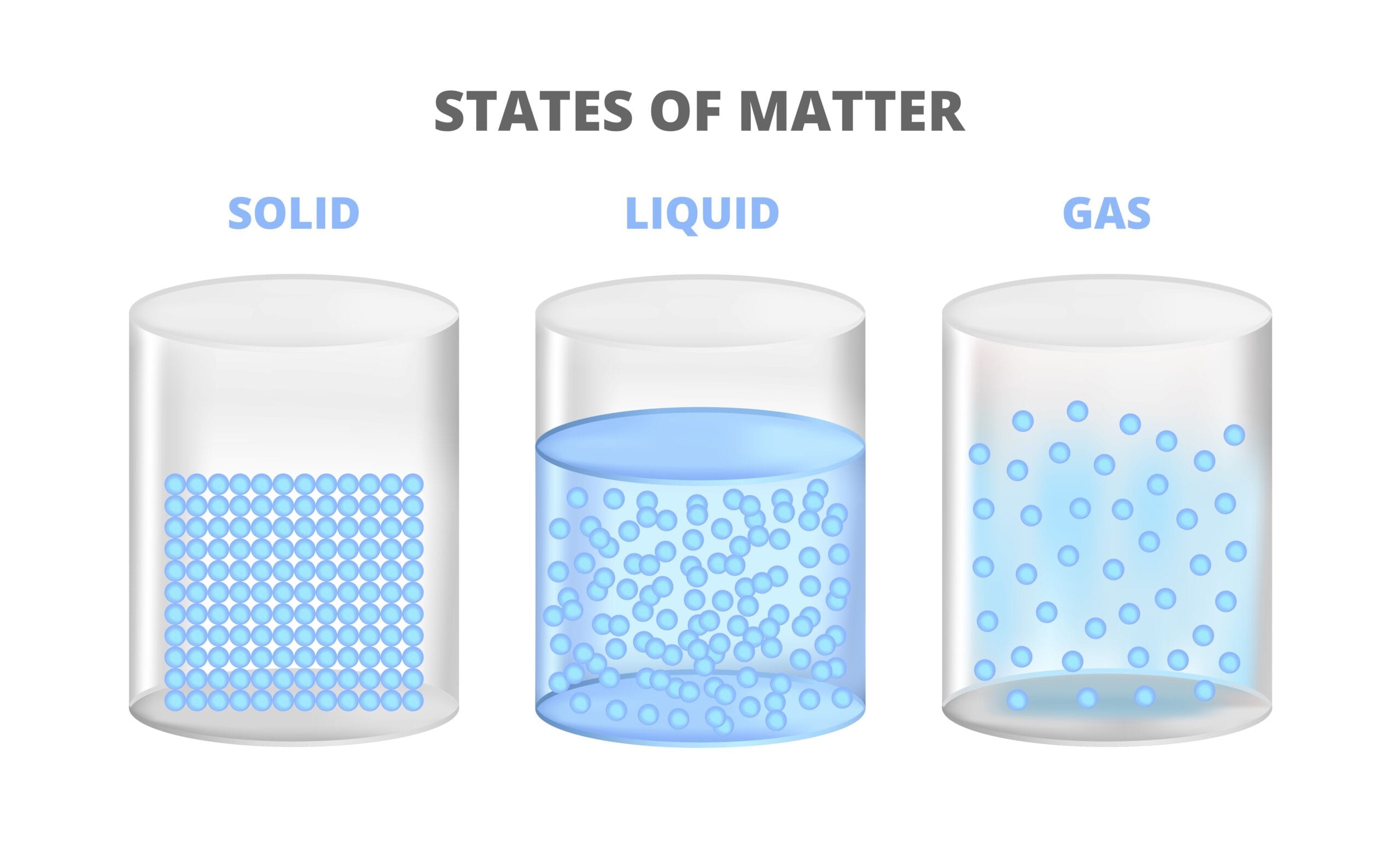Plasma, a captivating state of matter, sparks scientific debate with its enigmatic properties. Join us as we delve into the quest to understand the peculiar behavior of plasma, questioning the very nature of its volume. We’ll unveil the mysteries of this intriguing substance and explore ongoing scientific endeavors to unravel its fundamental traits. Get ready to embark on an enlightening adventure into the realm of plasma physics, where fluidity and convention collide, leaving us with captivating questions yet to be fully answered.
Is the Volume of Plasma Definite or Indefinite?
Let’s talk about plasma – the wild child of the matter world. You know how solids like ice cubes are pretty set in their ways, always holding their shape, and liquids like water take the shape of whatever container they’re in? Well, plasma likes to keep us guessing.
Plasma, often considered the fourth state of matter, isn’t as common in our everyday lives here on Earth, but it makes up a significant portion of the universe. Think stars, lightning bolts, and even those cool neon signs you see illuminating a city at night – all plasma!
Here’s the thing about plasma: it doesn’t play by the same rules as solids, liquids, or gases. That’s because plasma is made up of free ions and electrons, unlike the other states of matter. Imagine a dance floor filled with people (ions and electrons) zipping around at high speeds. They’re not really sticking together or forming any rigid structures. They’re just flowing and bouncing off each other. This is what gives plasma its unique properties and makes its behavior so complex.
So, to answer our big question: is the volume of plasma definite or indefinite? You guessed it – it’s indefinite. Just like a group of dancers spreads out to fill the floor, plasma expands to fill whatever space it’s in.
But wait, there’s more! Remember those external factors that can influence a dance floor, like the music’s tempo or how crowded it is? Similarly, factors like temperature, pressure, and even magnetic fields can affect how plasma behaves and expands. It’s almost as if plasma has a mind of its own!
Scientists are still trying to fully wrap their heads around plasma and its quirky properties. It’s a fascinating area of research, especially when you consider how much of the universe is made up of this stuff. Who knows what other secrets plasma holds? Maybe one day, we’ll harness its power for incredible new technologies!
What is the Volume of Plasma?
We’ve established that plasma is different from other states of matter like solids, liquids, and gases. One of the big differences is that plasma doesn’t really have a set volume like the others. It’s kind of like a free spirit that way!
Think of it like this: a gas will happily fill up whatever container you put it in, right? Plasma is even more independent. It doesn’t feel obligated to stay confined at all!
The reason for this is that the particles in plasma are super energized and spread out. They’re not bound together in the same way as in a solid or liquid, and they’re much farther apart than in a gas. This gives plasma a kind of “wild child” personality – it likes to roam free!
Now, you might be thinking, “If plasma doesn’t have a fixed volume, how can we even begin to measure it or work with it?” And that’s a great question! Scientists have come up with clever ways to define and measure plasma based on things like its density and the energy of its particles.
It’s important to remember that our understanding of plasma is always evolving. There’s still so much we are learning about this fascinating state of matter. New research is constantly shedding light on its properties and potential applications.
Does Plasma Have a Fixed Volume?
We’ve discussed solids, liquids, and gases, but things get a little wilder with plasma. You see, plasma doesn’t like to follow the rules – it’s like that friend who never wants to commit to plans.
You can’t really put plasma in a box and expect it to stay put. It doesn’t have a fixed volume like a solid or a liquid. Instead, it expands to fill whatever container it’s in, kind of like a gas. But here’s the twist: the shape and volume of plasma are much more influenced by electric and magnetic fields than ordinary gases are. Think of it like this: imagine trying to hold a cloud in your hands – it just won’t work!
This “free spirit” attitude of plasma is because it’s made up of ions and electrons, which carry electrical charges. These charges make plasma a fantastic conductor of electricity, way better than your typical copper wire. And when you apply a magnetic field? Well, let’s just say plasma starts to dance and swirl in fascinating ways.
Scientists are still unraveling all the mysteries of plasma. There’s ongoing research into how we can harness its unique properties for things like generating clean energy, powering spacecraft, and even treating medical conditions. The more we learn about plasma, the more we realize its potential to change the world!
Is the Volume Definite or Indefinite?
We’ve talked about solids, liquids, and gases, but plasma is where things get really interesting. Imagine a gas, for instance. It just expands to fill whatever space it’s in. Plasma is similar in that it doesn’t have a fixed shape or volume either. It’s kind of a free spirit in the world of matter!
You can’t really hold plasma in your hand like a solid, and it won’t settle at the bottom of a container like a liquid. Instead, it’s made up of these superheated, electrically charged particles that are constantly moving around. They’re like tiny little lightning bolts, zipping and zapping!
This unique characteristic makes plasma behave in ways that are totally different from the other states of matter. It’s why we see plasma in things like the sun and other stars, which are basically giant balls of superheated, glowing plasma. Pretty cool, huh?
Here’s a quick recap:
| State of Matter | Definite Shape? | Definite Volume? |
|---|---|---|
| Solid | Yes | Yes |
| Liquid | No | Yes |
| Gas | No | No |
| Plasma | No | No |
Now, you might be thinking, “If plasma is so wild and free, where do we even find it besides stars?” Well, believe it or not, scientists are finding more and more ways to use plasma in everyday technology. For example, did you know that those fancy plasma TVs actually use plasma to create the images on the screen? 🤯
And get this: researchers are even exploring ways to use plasma in medicine to develop new treatments for wounds and even cancer! We’re still learning a lot about the full potential of plasma, but one thing’s for sure: it’s a pretty amazing state of matter!
Which State of Matter Has an Indefinite Volume?
We’ve talked about solids, liquids, and gases, but now let’s dive into something a bit more mysterious: plasma. Plasma is often called “the fourth state of matter,” and it acts a lot differently than the first three.
Think of a gas – it expands to fill whatever space it’s in, right? Plasma is kind of similar; it doesn’t have a fixed volume either. Imagine trying to stuff plasma into a box – it wouldn’t hold its shape like a solid or settle at the bottom like a liquid. It would just keep spreading out!
What makes plasma so different? Well, it’s all about its charged particles. Plasma forms when you heat up a gas so much that its atoms start losing some of their electrons. These electrons then zip around freely, creating a sort of electric soup.
This “electric soup” is what gives plasma some really cool properties. For example, plasma can conduct electricity much better than any other state of matter. Not only that, but it’s also super sensitive to magnetic fields, reacting in ways that solids, liquids, and gases just don’t.
Now, you might be thinking, “Plasma sounds pretty out there. Where do we even find this stuff?” Well, believe it or not, plasma is actually the most common state of matter in the universe! Think about stars like our sun – they’re basically giant balls of plasma! And have you ever seen a bolt of lightning streak across the sky? You guessed it – plasma again! Even those cool neon signs you see lighting up city streets use plasma to create their vibrant glow.
Scientists are still learning a lot about plasma and all its potential uses. Some experts believe it could hold the key to developing new energy sources, while others are exploring its use in medical treatments and even space travel! It’s a fascinating area of research, and who knows what incredible discoveries about this shape-shifting state of matter await us in the future?
Is Plasma Volume Indefinite or Definite?
We’ve been talking about plasma, this super interesting state of matter that’s kind of like a gas, but way more energized. One of the big questions scientists have wrestled with is whether plasma has a definite volume like a solid or liquid, or if it’s more free-flowing. Let’s dive into that!
Think about a balloon filled with air. The air inside has a specific volume, right? It’s constrained by the balloon’s walls. Now, imagine you could somehow energize those air molecules so much that they break down into their individual parts – ions and electrons. That’s kind of what plasma is like. Those tiny particles are buzzing around with so much energy that they’re not really bound together in a neat and tidy way.
Because of this high energy and constant movement, plasma doesn’t really have a fixed shape or volume. It’s more like it expands to fill whatever space it’s in, kind of like if you popped that balloon and let the air spread out.
Now, it’s not quite as simple as saying plasma’s volume is totally random. Scientists are still studying how things like magnetic fields and other forces might influence how plasma behaves. It’s possible that under certain conditions, plasma might be contained or shaped in specific ways, but that’s still an area of active research.
Here’s what we can say for sure:
- Plasma’s particles are always on the move: Unlike the molecules in a solid, which are tightly packed, or a liquid, which are loosely held together, plasma’s particles are free to zoom around.
- This makes plasma super adaptable: This constant motion means plasma can flow and change shape much more easily than other states of matter.
- It’s all about the energy: The key difference between plasma and other states of matter is its energy level. That high energy is what gives plasma its unique properties and makes its behavior so complex.
So, while we can’t say definitively if plasma’s volume is always indefinite, it’s definitely not as clear-cut as solids or liquids. Who knows what future research might uncover about this fascinating state of matter!
How Much is One Plasma Volume?
We’ve been talking about plasma, this fascinating state of matter that’s a bit like a gas but with a twist. Now, you might be wondering: if we can measure a cup of water or a liter of air, how much exactly is “one plasma volume?”
Well, here’s the thing about plasma: it’s a bit of a rebel when it comes to volume. Unlike your everyday solids and liquids, plasma doesn’t like to be confined to a fixed size. It’s more like a free spirit, always ready to expand or shrink depending on its surroundings.
Think of it like this: imagine a balloon filled with air. You can squeeze it, making the air inside take up less space. Heat it up, and the air expands, pushing the balloon outward. Plasma acts in a similar way.
The temperature around it, the pressure it experiences, even the presence of magnetic fields—all these things can influence how much space plasma wants to occupy. So, there’s no single answer to “how much is one plasma volume.” It’s constantly changing!
Scientists and researchers are constantly studying plasma and its unique properties. Some experts suggest that understanding how plasma behaves in different environments could hold the key to breakthroughs in fields like energy production and space travel. So, while we might not be able to pin down a precise volume for plasma, one thing’s for sure: it’s a fascinating area of study with the potential to unlock some incredible secrets about the universe!
What is the Normal Plasma Volume?
We’ve been talking about plasma, this fascinating state of matter that’s kind of like a gas, but with a twist. Now, you might be wondering, “How much space does plasma actually take up?”. It’s a great question, but the answer isn’t as simple as you might think.
You see, plasma doesn’t really play by the same rules as solids, liquids, or even regular gases. It’s got this free-spirited nature because its particles are super energetic and spread out. Think of it like a group of kids let loose in a park – they’re not going to stay huddled in one spot, are they? They’ll zip around and fill up the entire space!
That’s kind of what plasma does. It doesn’t have a fixed volume like a can of soda. Instead, it expands and contracts, almost like it’s breathing. Things like temperature, pressure, and even magnetic fields can influence how much space it takes up. So, the volume of plasma is always changing depending on its environment.
Now, scientists are still trying to wrap their heads around all the complexities of plasma. It’s a hot topic of research, and there’s still a lot we don’t know. But one thing’s for sure: plasma is anything but boring!
How to Calculate Plasma Volume?
We’ve talked about what plasma volume is and why it matters. Now, let’s dive into how it’s actually figured out. This isn’t something you’d typically do at home, of course—it’s a process for medical professionals. But, understanding it can give you a better grasp of what they’re looking at when assessing your health.
Think about it like this: your blood is like a big pot of soup. Plasma is the broth, and the red blood cells, white blood cells, and platelets are like the veggies and noodles floating around in it. Calculating plasma volume is like figuring out how much broth you’ve got compared to all the solid stuff.
Getting to the Numbers
The first thing doctors need is a measurement called hematocrit (Hct). This basically tells them the percentage of your blood that’s made up of red blood cells. A simple blood test can give them this number.
Remember that plasma makes up a big chunk of your blood—usually around 55%. So, if they know your total blood volume (TBV) and how much of it is red blood cells (Hct), they can work out the rest!
They use a pretty straightforward formula:
Plasma Volume (PV) = Total Blood Volume (TBV) x (1 – Hematocrit (Hct))
Let’s break it down with an example: say someone has a total blood volume of 5 liters and their hematocrit is 40% (or 0.40 as a decimal).
- Subtract: 1 – 0.40 = 0.60 (This tells us that 60% of their blood is plasma)
- Multiply: 5 liters x 0.60 = 3 liters (This means their plasma volume is 3 liters)
Easy peasy, right?
Why It Matters in the Big Picture
Knowing someone’s plasma volume isn’t just about crunching numbers. It helps doctors understand a whole lot about a person’s health, particularly when it comes to fluid balance in the body.
- Dehydration SOS: If someone’s dangerously dehydrated, knowing their plasma volume helps doctors figure out exactly how much fluid they need to get things back on track.
- Blood Loss Detective: In emergencies like accidents or surgeries, this calculation helps estimate blood loss, guiding doctors in providing the right amount of blood transfusions.
- Keeping Tabs on Chronic Conditions: For folks with heart or kidney problems, monitoring plasma volume helps manage their condition and adjust treatments as needed.
But Wait, There’s More!
While the formula is simple, keep in mind that many things can affect plasma volume. Things like pregnancy, certain medications, and even just drinking a ton of water can throw things off a bit.
That’s why it’s important to remember that this calculation is just one piece of the puzzle. Doctors use it alongside other tests and a good old-fashioned physical exam to get the full picture of your health.
The Bottom Line: It’s All Connected
So, there you have it – how to calculate plasma volume in a nutshell! It might seem like a small detail, but it plays a big role in understanding and managing various health conditions. If you’re ever curious about your own plasma volume or how it relates to your health, don’t hesitate to ask your doctor.
How Much Plasma Is in 1 mL of Blood?
We’ve already established that plasma is like the liquid highway of our blood, carrying all sorts of important stuff around our bodies. But how much of our blood is actually made up of this crucial fluid?
Well, it turns out that a little over half of our blood is plasma. More specifically, about 55% of a typical blood sample will be plasma. That means for every milliliter (mL) of blood coursing through your veins, you’re looking at roughly 0.55 mL of plasma.
Now, you might be thinking, “Okay, that’s interesting and all, but why should I care about how much plasma is in my blood?”
It’s a fair question! Understanding our plasma volume is actually really important when it comes to diagnosing and managing certain health conditions. For example, if someone is severely dehydrated, their plasma volume might be lower than normal. On the flip side, someone with certain heart conditions might retain fluid, leading to a higher plasma volume.
Doctors and researchers use a bunch of factors to figure out someone’s plasma volume. These include things like a person’s height, weight, and even something called hematocrit, which is the ratio of red blood cells to total blood volume.
Interestingly, there are even online calculators that can provide a rough estimate of your plasma volume based on some basic information. Keep in mind, though, that these calculators are just estimates and shouldn’t replace the advice of a healthcare professional.
The study of blood and its components, like plasma, is constantly evolving. New research is always being conducted, leading to a more nuanced understanding of how our bodies function. It’s a fascinating field, and who knows what exciting discoveries await us in the future!
Is Plasma 55% of Blood Volume?
We were talking about plasma, right? This fascinating liquid that makes up a big chunk of your blood. You see, it’s not just red blood cells floating around in there! It turns out that about 55% of your blood volume is actually plasma. That’s more than half!
This stuff is pretty important because it acts like a delivery system, carrying all sorts of essential things around your body. We’re talking nutrients from the food you eat, hormones that keep things running smoothly, even waste products that need to be taken away.
Now, you might be wondering if everyone has the exact same amount of plasma. Well, not exactly. Think about it – if you’re dehydrated, your blood volume might be a bit lower, and that means your plasma levels could dip a little too. The same goes for certain medical conditions. Sometimes, things like anemia or problems with your organs can also affect how much plasma is circulating in your system.
One of the things that makes plasma so interesting is that it doesn’t really have a defined shape or volume like solids and gases. It’s kind of like a free spirit! This is because the particles in plasma are super energized, and they just spread out to fill whatever space they’re in. Pretty cool, huh?
Here’s a quick recap:
- Plasma makes up a little over half of your total blood volume (around 55%).
- Things like how hydrated you are, your overall health, and any medical conditions you might have can cause your plasma levels to fluctuate.
- Unlike solids and gases, plasma doesn’t have a fixed shape or volume – it’s adaptable!
Of course, scientists are always learning more, and what we know about plasma is constantly evolving. However, one thing is certain: plasma plays a vital role in keeping our bodies functioning properly.
Want to dive deeper into the world of blood and plasma? The National Cancer Institute has a wealth of information on their website. Just search for “plasma” in their dictionaries section!
Uncover the intricate nature of liquids’ volume. Does liquid have a definite volume? Discover the captivating secrets of this fascinating state of matter.
- Unlock Water’s Symbolism: A Cross-Cultural Exploration - April 20, 2025
- Identify Black and White Snakes: Venomous or Harmless? - April 20, 2025
- Unlocking Potential: Origins High School’s NYC Story - April 20, 2025
















1 thought on “Unlocking the Enigma: Exploring the Definite or Indefinite Nature of Plasma Volume”
Comments are closed.